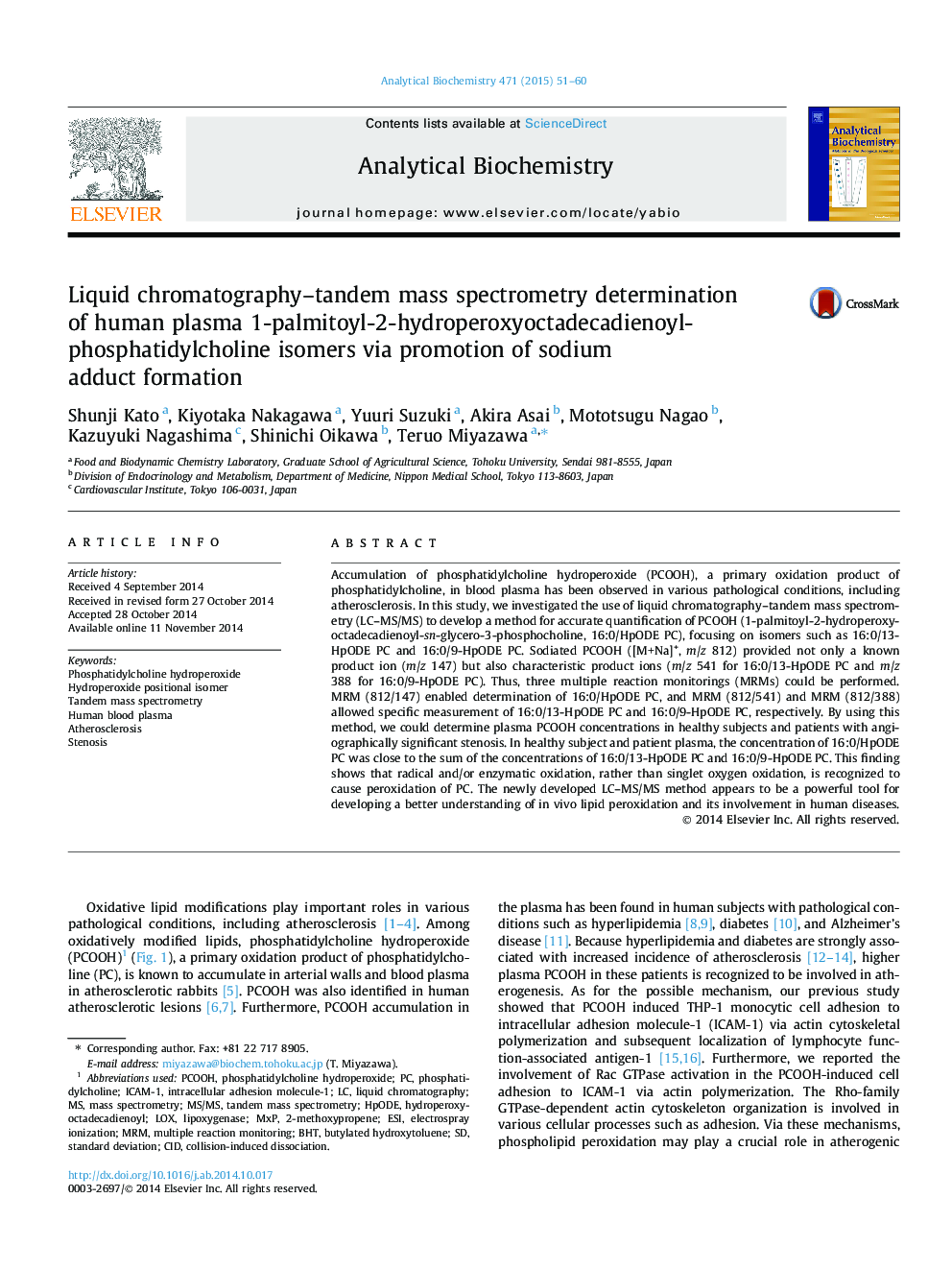| Article ID | Journal | Published Year | Pages | File Type |
|---|---|---|---|---|
| 1172769 | Analytical Biochemistry | 2015 | 10 Pages |
Accumulation of phosphatidylcholine hydroperoxide (PCOOH), a primary oxidation product of phosphatidylcholine, in blood plasma has been observed in various pathological conditions, including atherosclerosis. In this study, we investigated the use of liquid chromatography–tandem mass spectrometry (LC–MS/MS) to develop a method for accurate quantification of PCOOH (1-palmitoyl-2-hydroperoxyoctadecadienoyl-sn-glycero-3-phosphocholine, 16:0/HpODE PC), focusing on isomers such as 16:0/13-HpODE PC and 16:0/9-HpODE PC. Sodiated PCOOH ([M+Na]+, m/z 812) provided not only a known product ion (m/z 147) but also characteristic product ions (m/z 541 for 16:0/13-HpODE PC and m/z 388 for 16:0/9-HpODE PC). Thus, three multiple reaction monitorings (MRMs) could be performed. MRM (812/147) enabled determination of 16:0/HpODE PC, and MRM (812/541) and MRM (812/388) allowed specific measurement of 16:0/13-HpODE PC and 16:0/9-HpODE PC, respectively. By using this method, we could determine plasma PCOOH concentrations in healthy subjects and patients with angiographically significant stenosis. In healthy subject and patient plasma, the concentration of 16:0/HpODE PC was close to the sum of the concentrations of 16:0/13-HpODE PC and 16:0/9-HpODE PC. This finding shows that radical and/or enzymatic oxidation, rather than singlet oxygen oxidation, is recognized to cause peroxidation of PC. The newly developed LC–MS/MS method appears to be a powerful tool for developing a better understanding of in vivo lipid peroxidation and its involvement in human diseases.
